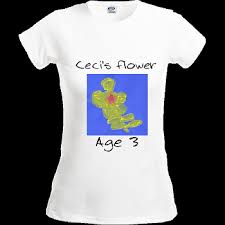Printed Apparel
Whether you’ve a volunteer looking for team logo wear, a business owner creating a professional look or an event organizer commemorating an occasion, custom T-shirts can be a great option. A little information will help you make an informed decision and eliminate potential mistakes and expense.
Depending on the quality and number of T-shirts required, heat transfers or “heat applied film” can be more economical than screen or dye-sublimation printing. Screen and direct to garment can save time and money in larger quantities, but set up costs can make these options less attractive for small quantities.
Depending on the quality and number of T-shirts required, heat transfers or “heat applied film” can be more economical than screen or dye-sublimation printing. Screen and direct to garment can save time and money in larger quantities, but set up costs can make these options less attractive for small quantities.
Screen Printing
Also known as silkscreening, this process involves applying ink or paint to the shirt using a prepared screen. This method (in some form) has been in use for more than a thousand years.
With this process, each color in your design will require a different screen, increasing the initial cost. However, since this process works like a stencil, the higher quantity of shirts you order, the lower the unit price will be.
Because the media is transferred onto and permeates the the fabric, your design will last longer than that of a heat transfer.
Advantages:
With this process, each color in your design will require a different screen, increasing the initial cost. However, since this process works like a stencil, the higher quantity of shirts you order, the lower the unit price will be.
Because the media is transferred onto and permeates the the fabric, your design will last longer than that of a heat transfer.
Advantages:
- Colors used in screen printing are vibrant
- High quality image
- Long lasting results
- Cost effective for large quantity orders
- Setup costs are high when compared to other methods
- Most printing companies will have require a minimum quantity order
- Multiple colors require multiple screens, adding to the initial cost
- Small quantities can be very expensive
Heat Transfer
|
Heat transfer designs can be applied to a much broader range of fabrics and colors than dye sublimation designs, although they work best on cotton. Heat transfer printing is not quite as durable as dye-sub, but it is more affordable and is typically the go-to decoration method for small run custom t-shirts, sweatshirts and hoodies.
|
Heat Transfer VinylThere are two primary methods utilized for heat transfers. The first involves using a heat press to transfer your custom vinyl cut out designs onto the shirt. The second uses specialized ink to print the design onto transfer paper, which is then placed on the shirt and heat pressed to the fabric.
Vinyl printing employs a unique, soft vinyl that is professionally cut using CAD cutter and other special software. Then you print this material onto your t-shirt using heat press method. The method allows you to print one-off designs and even longer runs, making it a great alternative for printing multiple garment types. Furthermore, it lets you layer vinyl, which makes it possible for you to print in different colors (and create vibrant designs). Vinyl works well for the slogans, small graphics, and words. But it’s not suitable for large printed areas as your t-shirt may lose its flexibility. |
Dye-sublimation
|
Dye sublimation is another form of heat transfer, where the graphics are digitally printed and then heated to transfer the dye onto your material on a molecular level. Because the design is bonded on a molecular level it will never crack or peel. However, dye-sublimation also comes with some limitations as well. Dye-sub can only be done on white or light colored fabrics. Additionally, dye sublimation is limited to polyester fabrics.
|





